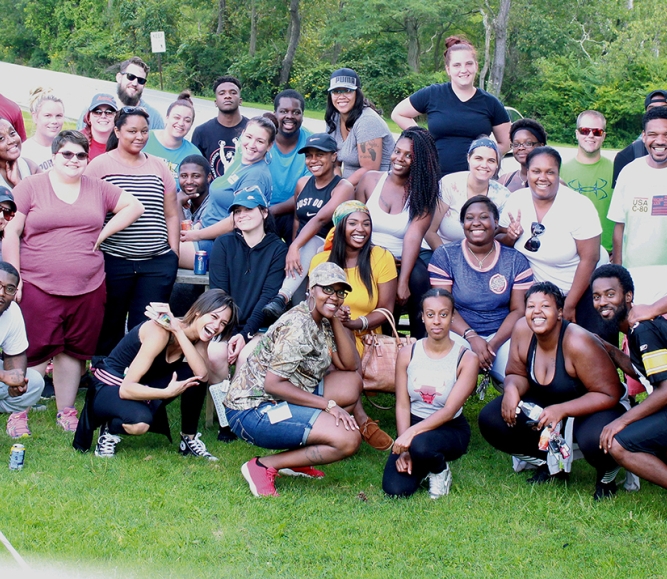Casey Foundation leader emphasizes support for youth

Key Takeaways
You aren’t imagining it — childhood is longer and bumpier now than it was for earlier generations.
That’s why, Leslie Boissiere said, the Annie E. Casey Foundation’s Thrive by 25 program focuses its efforts on youth ages 14-25, reflecting research that shows brain development continues into the mid-20s.
Boissiere, Annie E. Casey’s vice president for external affairs, talked to NACo Second Vice President George Dunlap July 13 about the foundation’s work during the Closing General Session. The Thrive by 25 program focuses on providing youth with five essential elements through partnerships in Atlanta, Baltimore and Albuquerque, along with rural and urban communities in nearly every state. Those elements are:
- Food, health care and housing
- Stable relationships with caring adults
- Education and career skills
- Well-paying jobs and financial tools
- Leadership opportunities
“To make sure that all young people succeed, we know we have to start with young people who are furthest from opportunity,” Boissiere said. “That includes youth in the juvenile justice system, the child welfare system, young people in poverty and young parents who are still growing up and providing for their children.”
The foundation hopes to create opportunities for young people to learn by exploring, trying, failing and trying again without overly harsh punishment for their mistakes.
Their efforts succeed with the help of partners, including county governments.
“Counties can continue to invest in prevention to keep more kids out of the justice system by funding youth recreation, after-school activities, mentoring, job training, all the supports we can provide for our kids,” she said.
During the discussion, Boissiere encouraged county officials to offer expanded diversion options and alternatives to detention, and to address non-violent delinquency cases by partnering with trusted grassroots organizations that provide the supervision, positive programming and family-centered services that are crucial to helping them grow, learn and thrive.
County officials can use the power of their office to set the agenda for making this work happen, reframing the narrative around how government treats youths in need and by incorporating new findings related to brain development in their juvenile justice and human service systems.
“You have the incredible power to convene stakeholders from different localities that sometimes may traditionally have been resistant,” she said.
And the leaders themselves, either by working personally or supporting efforts, can provide guidance and understanding and a human connection.
“When youth are asked what helped them the most, they might name a program, but they will absolutely name a person that believed in them,” she said.
Boissiere highlighted Pierce County, Wash.’s opportunity-based probation program, which offers kids incentives, including early release, for meeting milestones in their programming. That program has resulted in 60% fewer new court referrals from those children and fewer violations overall.
It demonstrates her thesis:
“When we surround young people with resources they need to succeed, they do well.”
Related News

U.S. Department of Agriculture announces reorganization
On July 24, U.S. Secretary of Agriculture Brooke Rollins announced a major reorganization of the U.S. Department of Agriculture (USDA) that will relocate thousands of federal employees, restructure regional offices and consolidate administrative services and operations. The changes are expected to reduce USDA’s footprint in Washington, D.C. and shift more personnel to regional hubs across the country.

HHS relaunches applications for TANF Pilot Program
This month, the U.S. Department of Health and Human Services relaunched applications for the Temporary Assistance for Needy Families (TANF) Pilot Program, authorized by the Fiscal Responsibility Act of 2023.
County News
Support Partners Help Youth Bridge Gap to Adulthood

